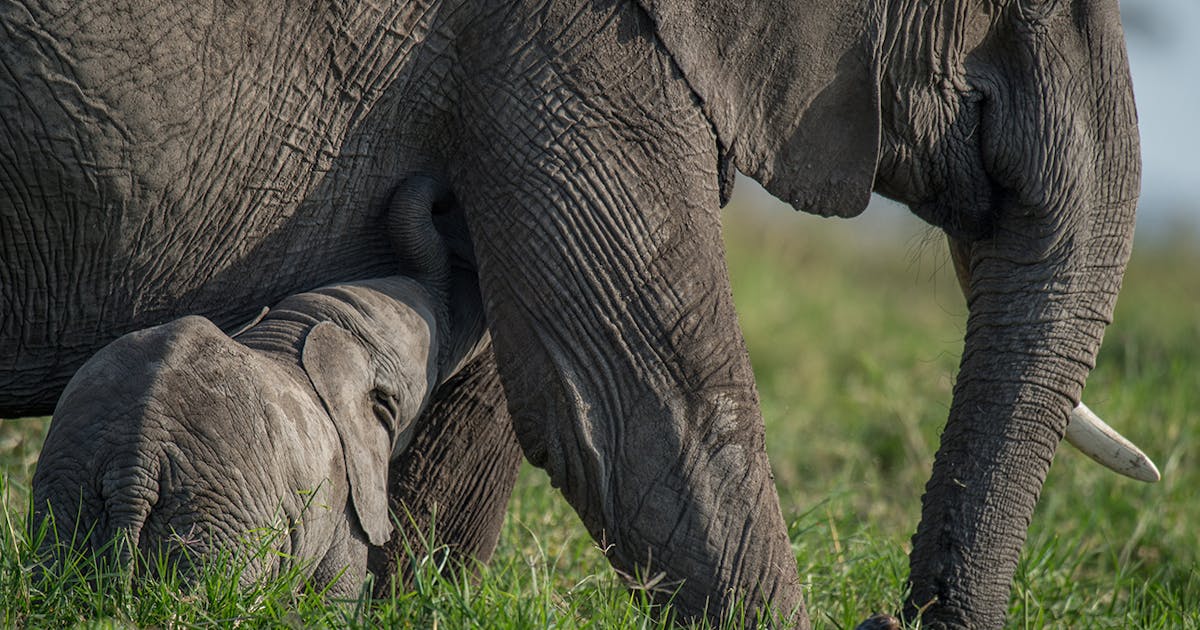This post was updated on August 18, 2021.
Elephant mothers carry their babies for nearly two years before giving birth. Then they ensure their babies get the best food, teach their children the most useful skills and show their children how to lead the herd during hard times.
Elephants recognize that their mothers know best — the herds are matriarchal. The oldest female elephant plays a key role in controlling the social network of the group and in ensuring the survival of the family.
Not all elephant families are so fortunate: When their mothers are lost to poaching or to human-wildlife conflict, young orphaned elephants stand little chance in the wild. Now, organizations like Reteti Elephant Sanctuary — the first community-owned
elephant orphanage in Africa, and the subject of the new Conservation International film “My Africa”
— are filling the gap. By raising orphaned elephants for release back into the wild, the sanctuary offers a glimmer of hope that this threatened species can continue to thrive.
Far better, of course, to stop poaching and conflict in the first place — and allow young elephants to learn from some of the busiest mothers on the planet. On this Mother’s Day, here are three reasons why elephants make some of the best mothers.
1. Elephant mothers produce the best meals
A baby elephant adds about two pounds of bodyweight each day after birth. An elephant mother’s milk changes four times during the
weaning process to meet the baby’s needs.
At Kenya’s Reteti Elephant Sanctuary, keepers
have to make sure that orphaned elephants get the nutrients they need, using a precise feeding program specialized for each elephant. Each bottle is different for each elephant, and keepers must feed the elephants eight times a day to keep them healthy.
The best substitute for a mother elephant’s milk? Human baby formula, which is fortified with protein, fat and vitamins.
During the painful teething process, an elephant mother’s milk adapts to soothe the baby: Mother elephants will change their diets to include plants with anti-inflammatory properties to help the baby cope with incoming teeth. At the sanctuary, keepers
use their knowledge of local plants to administer natural medicines to mimic the same types of nutrition.
2. Elephant mothers are the best teachers
Elephants learn how to pick the best plants for eating, how to defend against predators and how to navigate steep embankments — all from their mothers.
At Reteti, keepers focus on introducing the young elephants to their natural surroundings in hopes of eventually returning them to the wild. Some of this information can’t be taught by the human keepers alone.
This is where Shaba comes in.
The oldest female elephant at the sanctuary, Shaba arrived when she was 15 months old, after her parents were killed by poachers. Now at almost
age three, she has taken on the role of matriarch for the Reteti herd, leading the herd every day on its walk about the bush and greeting every new orphaned elephant when they arrive. This way, even the orphaned elephants have a female role model
to lead the way.
3. Elephant matriarchs are the best leaders
During times of drought, when animals’ usual water sources dry up, the oldest female elephants can lead their herd hundreds of miles to water they visited years before — because they remember the locations. Elephant herds with older,
larger matriarchs tend to fare better during times of crisis, because they have longer memories.
Sometimes the water source no longer exists, or human development gets in the way. By collaring elephants and tracking their movements, conservationists are learning more about elephant migrations to protect the animals’ water sources and minimize
human conflict.
Organizations use GPS tracking equipment to learn about elephants’ behaviors and movements in real-time.
Aside from gathering more data about elephants’ needs, this technology can save an elephant’s life: When the researchers notice that a particular elephant becomes unusually immobile, this could mean that an elephant is being attacked by
poachers. The researchers then send text messages to nearby rangers who can investigate — and potentially stop — poachers from harming the elephant.
Feeding, teaching, leading: It’s all in a day’s work for elephant moms.
Morgan Lynch is a staff writer for Conservation International.
Further reading

